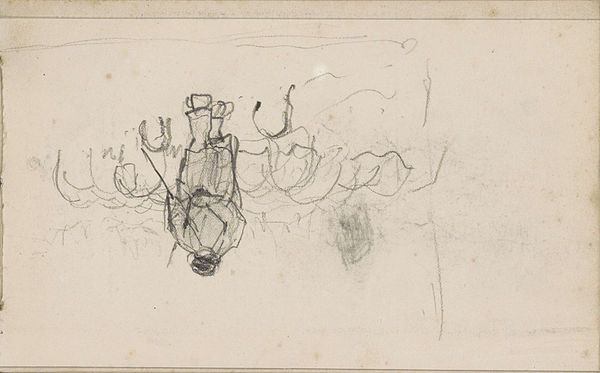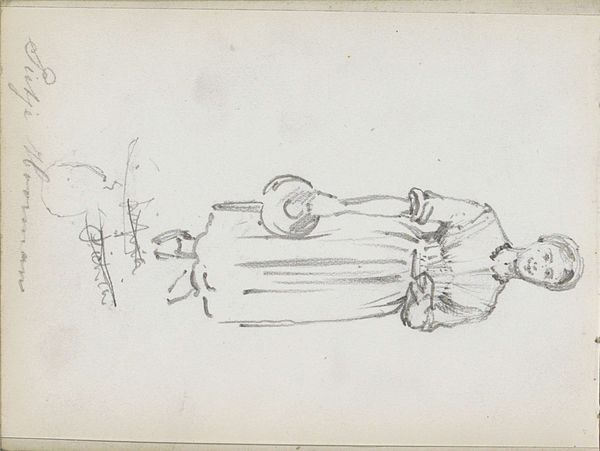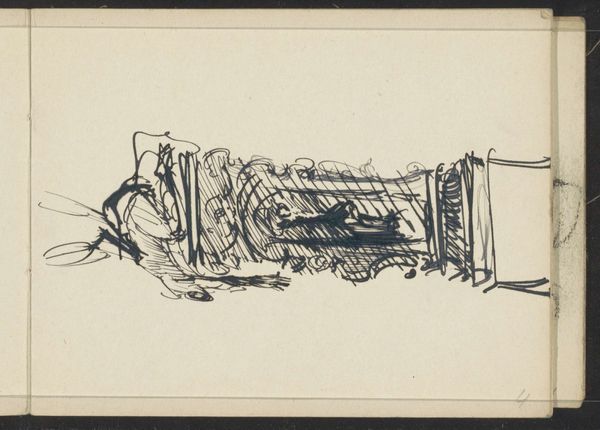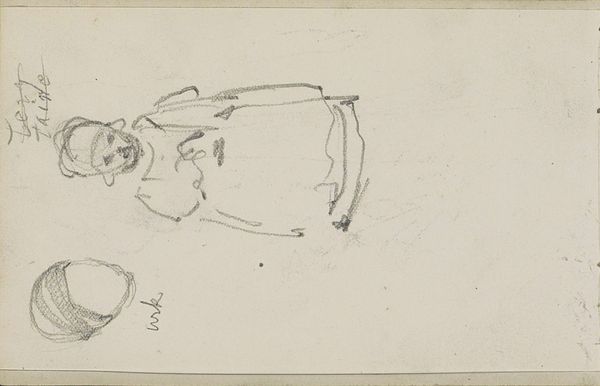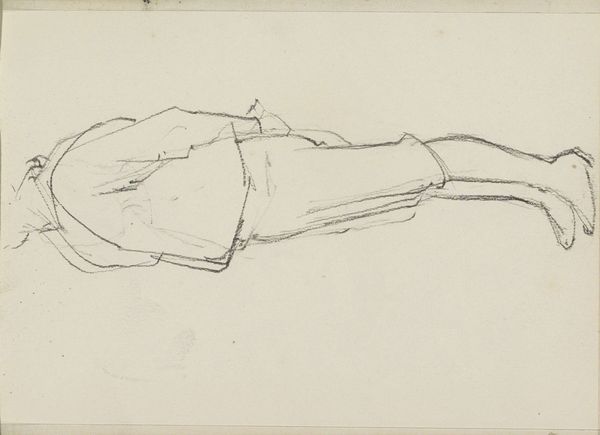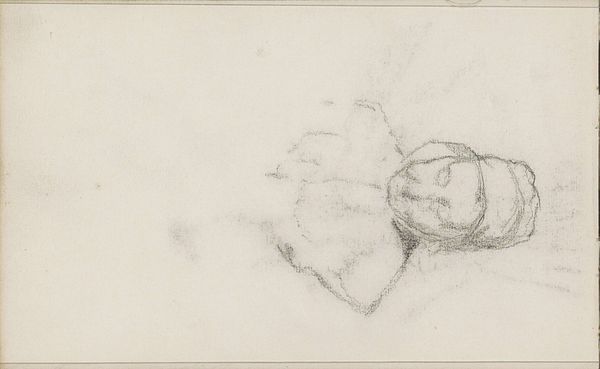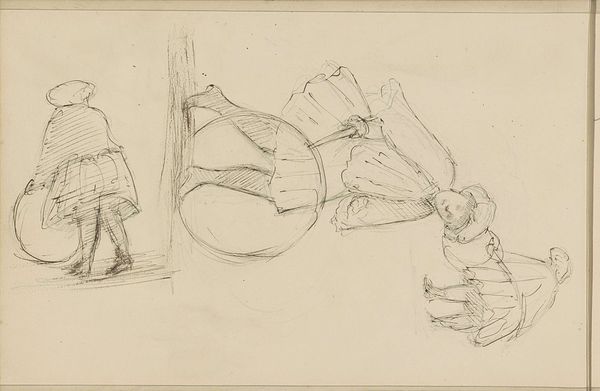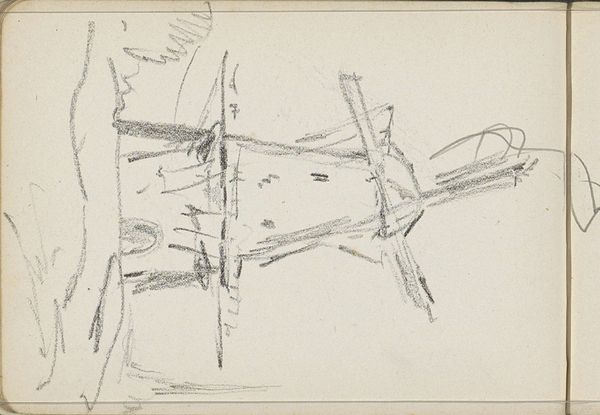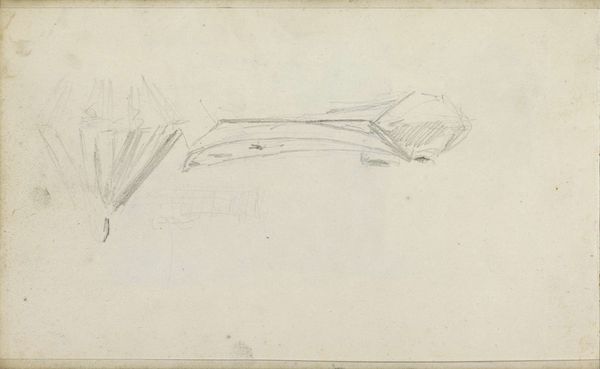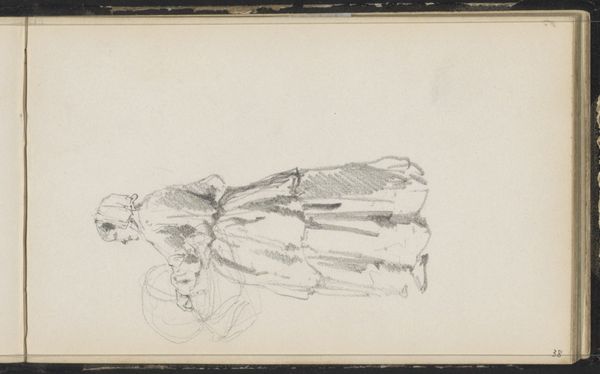
drawing, pencil, graphite
#
drawing
#
pencil sketch
#
pen-ink sketch
#
pencil
#
graphite
#
realism
Copyright: Rijks Museum: Open Domain
Editor: This is "Kelk met een ornamentele voet," or Chalice with an ornamental foot, by Maria Vos, from 1867. It looks like a pencil and graphite drawing. The intricate ornamentation is just astonishing; so elaborate. What do you see in this piece? Curator: Well, first, let's consider the chalice itself. What does it symbolize? Vessels often represent the body or spirit, think of the Holy Grail in Arthurian legend. Does the elaborate base change its meaning for you? Editor: It makes me think about the status or wealth connected with the church, as it is literally put on a pedestal! Also, the position of the drawing within the composition feels off-balance... almost carelessly rendered. Is it incomplete? Curator: Perhaps it wasn’t intended as a finished work. Sketchbooks are full of quickly recorded impressions and details. Are there other, hidden, narratives? Think about what the Church represented in the Netherlands in the mid-19th Century. Vos may be implying complex relations between spirituality, wealth and societal privilege. How does that sit with you? Editor: Interesting. Maybe that casualness suggests a subversion of the chalice as a sacred object, reducing it to just a detailed object... Were other sketchbooks from this era making this comment on class and faith? Curator: It's certainly a thread in the broader tapestry of 19th-century art and thought. Vos’s choice to focus on ornament might subtly question the spiritual meaning and also draw attention to craftsmanship and artistic skill, don’t you think? Editor: That's given me a lot to consider. I was focused on the sketch itself as just an object, now I see a bigger context to consider! Curator: Yes, and remembering that art carries echoes – reflections of its time and glimpses of what continues to resonate.
Comments
No comments
Be the first to comment and join the conversation on the ultimate creative platform.
